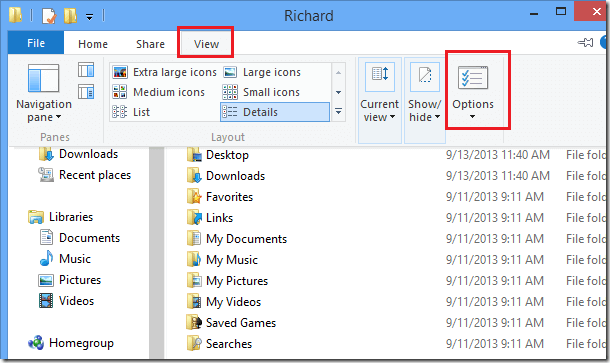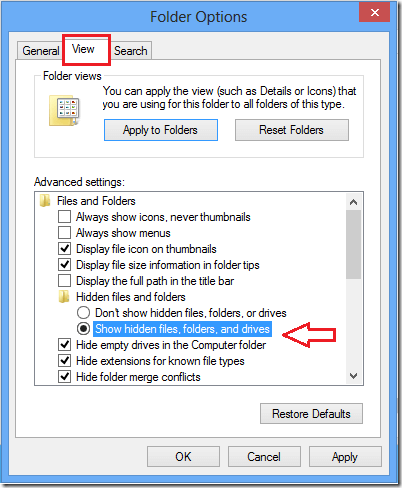Windows will not let you view hidden files and folders by default. Hidden files and folders are always hidden in Windows. Sometimes, however, you may need to view these files when using Windows 8 to fix issues, and this brief tutorial is going to show you how to make that happen.
To access hidden files, you must tell Windows to show them. Hidden files are hidden for a reason, if and you don’t have good reasons to view or edit hidden files and folders, please don’t unhide them.
Most hidden files are system files and shouldn’t be touched by regular users. On the other hand, some Windows issues can be resolve be editing and changing some hidden file properties.
For example, I wanted to send a file to another user using Outlook email client but the email kept getting rejected by some firewall policy. I dug into it and found out that the firewall was rejecting the email because of the file extension which was .apk (android file).
What I did was to change the file extension to something other than .apk and send the file. In order to change the extension, you must enable hidden file and uncheck the box to unhide files with known extensions.
To do that in Windows 8, press the Windows Key + X to show Windows 8 Tools Menu. When it opens, select File Explorer from the list. When file explorer opens, click View –> Options as shown below.
Next, select the View tab and enable ‘Show hidden files, folders and drivers’ option on the page, then click OK.
That’s it!

